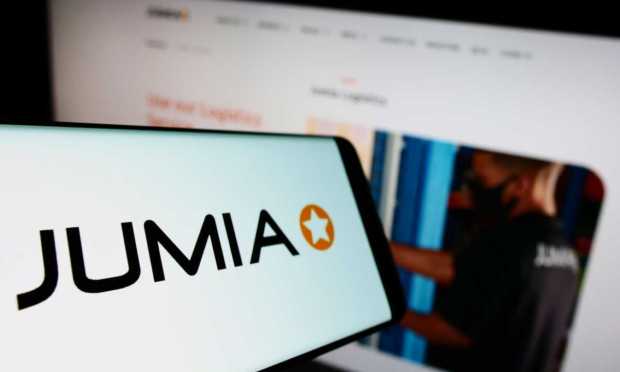Jumia Pins Hopes on Diversified Revenue Streams, Cost Savings to Reach Profitability

Anyone charting the story of Pan-African eCommerce giant Jumia will know that the company’s stock market performance to date has been something of a roller coaster.
Read more: Jumia Counting On Services To Rebound From 70 Pct. Shares Drop
And as is often the case in such high-profile tech listings, a much-discussed aspect is how long it will take the company to attain break-even. After all, shareholders want to know when they can count on the steady income of dividends that will make their investments worthwhile.
While there is no formula for how long it should take a company to become profitable, in the eCommerce space, Amazon seems as good a comparison as any. Having launched in 1994, Amazon reported its first net profit in the fourth quarter of 2001, a turnaround of seven years.
But a decade after Jumia’s launch, CEO Sacha Poignonnec told investors during a presentation of its first half (H1) 2022 results Wednesday (Aug. 10), “We believe that we have turned a corner and are past the peak of adjusted EBITDA losses that we reached in Q4 of last year,” adding that the company expects to see year-over-year (YoY) declines in quarterly losses going forward.
In its goal to break even, the Pan-African eCommerce super app laid out a tripartite strategy during the presentation consisting of a focus on each “building block of our path to profitability: usage growth momentum … accelerating monetization [and] cost efficiencies.”
Accelerating Monetization
As for Jumia’s proprietary payment solution, JumiaPay, while the payment method accounted for a larger share of total payment value compared to Q2 2021, in terms of the number of orders that used the method, JumiaPay has decreased in prevalence.
Related: JumiaPay Transactions Account for 34% of Total Orders in Q1, Faces Increased Competition
Another pillar of Jumia’s path to profitability is to accelerate monetization across its revenue streams and diversify revenue-generating activities. And although they “remain in the very early days of marketing and advertising monetization on the platform,” it is a promising monetization avenue that the company is keen to capitalize on, Poignonnec said.
In the second quarter of 2022, for example, 86% of the yearly growth in marketplace revenue came from marketing and advertising and value-added services, all newer revenue streams compared to money earned from commissions and fulfillment.
Growing Usage
In terms of expanding usage, the Nigeria-based firm reported that it expects to close the year with gross merchandise volume (GMV), up 25% compared to 2021.
The company pointed to the growth of the “everyday” goods categories, which include food, beauty, fashion, and JumiaPay App activities, as a factor contributing to the overall increase in sales.
The last of the everyday categories, “JumiaPay app activities” doubled from 9% in Q2 2020 to 18% in Q2 2022.
In today’s earnings call, Poignonnec said that “JumiaPay transactions reached 3.4 million in Q2 this year, up 25% year over year supported by accelerating volume growth across the business, and in the food delivery category in particular.”
While the payment method accounted for a larger share of total payment value compared to Q2 2021, in terms of the number of orders that used the method, JumiaPay has decreased in prevalence.
Poignonnec summarized that “overall, the growth momentum of JumiaPay on platform remains very robust.
For successive quarters, everyday goods have accounted for a growing share of Jumia’s total sales, of which they now make up 66%. The flip side to the increased share of total sales taken up by everyday goods is that phones and electricals now account for a much smaller share than previously.
As Sami Louali, executive vice president of Financial Services at Jumia Technologies, told PYMNTS’ Karen Webster, the changing makeup of Jumia’s sales reflect how, post-pandemic, Africans are more and more used to browsing, clicking and buying basic staples as opposed to just expensive but less frequent purchases.
See more: Jumia On Africa’s Great eCommerce Shift — Toward ‘Everyday Items’
In parallel to the retailer’s changing GMV mix, Jumia announced that it continues to be “focused on enhancing the convenience of our services and speed of delivery.”
The company stated that it handled over 3 million packages during Q2 2022, up 18% year over year, while its average end-to-end delivery time (excluding the Zando brand in South Africa) was 1.6 business days, down 17% YoY.
Increased Efficiency
Across its warehouse, freight, and shipping operations, Jumia is leveraging technology to increase efficiency and drive down costs.
The company has taken advantage of increased delivery volumes driven by the rollout of free next-day shipping initiatives to scale up its warehouse operations and negotiate more favorable terms with its logistics partners.
Related: UPS Partners Africa’s Jumia on eCommerce Distribution Network
Jumia continues to grow its network of pick-up stations which offer a far more cost-efficient distribution method than door-to-door delivery.
Finally, the firm is updating its warehouse processes, with a focus on optimizing stock allocation and reducing packaging for both inbound and outbound logistics. In the groceries category, for example, Jumia is replacing disposable packaging with reusable containers in which customer orders are placed.
For all PYMNTS EMEA coverage, subscribe to the daily EMEA Newsletter.
